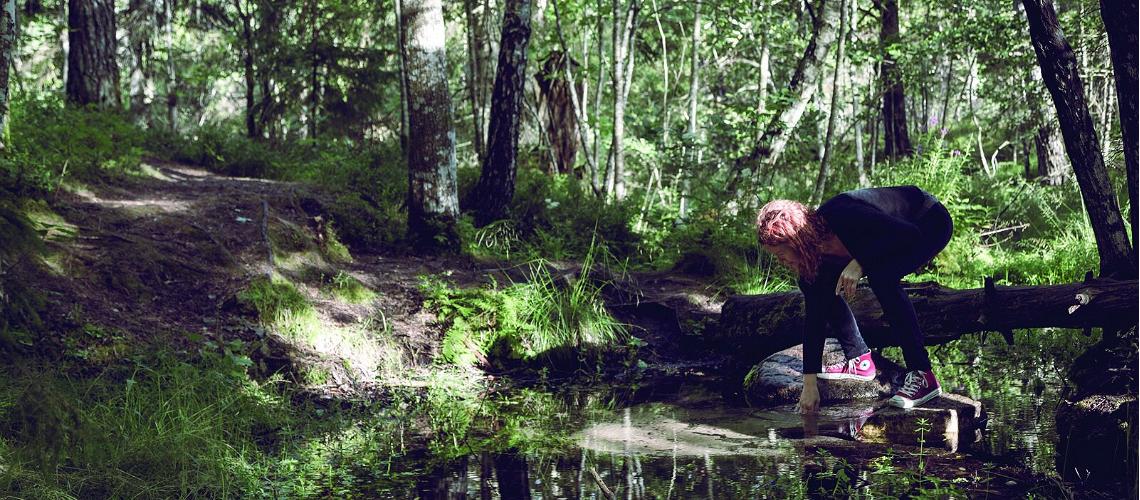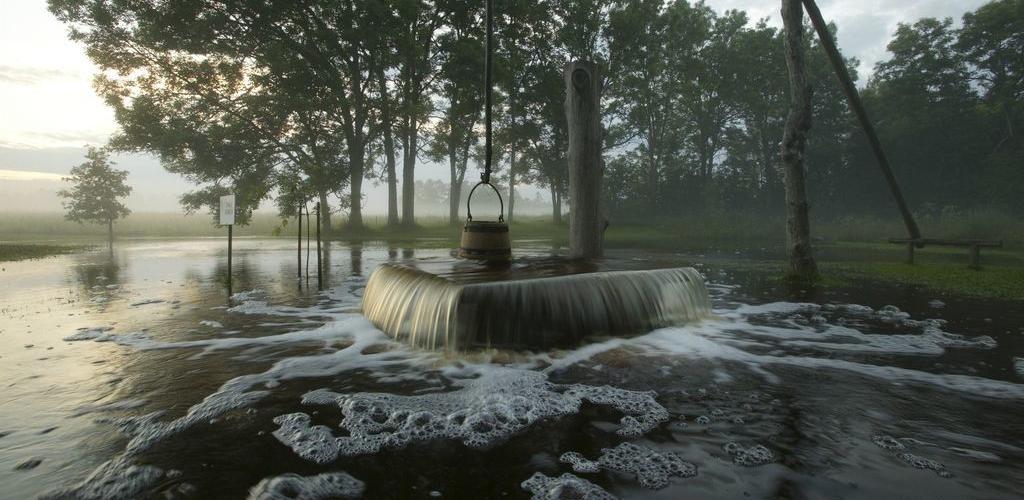Estonia – Visit thousands of powerful springs
Estonia has thousands of large springs, pouring out litres of groundwater in a second, cleansed in the depths of Earth’s crust for decades. Even today most Estonians quench their thirst with drinking water sourced from local springs.
Springs in North Estonia are particularly pleasing to the eye: clear blue water dotted with rocks painted white by the limestone ground. South Estonian springs on the other hand have high iron content and may have strong colour and taste of rust. Some of the springs are even known for their healing properties.
Springs around the Pandivere uplands
The springs around Pandivere uplands are located in centre and northeastern parts of Estonia. Most well know of these are Äntu lakes. There are a total of seven lakes, but perhaps the best known one is the eight-metre deep Sinijärv. It boasts a bright, clear greenish blue tone, well-suited to its serene forest surroundings.
Norra Manor in central Estonia is surrounded by large spring lakes known collectively as Norra springs. One is a crystal clear spring lake, known as Oostriku spring lake, dotted with large rocks and a wooden bridge built for visitors. Another is Sopa spring. At 4.8 meters deep, it is Estonia’s deepest spring, hiding decades- or even centuries-old tree trunks that have been well-preserved in the limestone spring water.

Tuhala witch’s well
Estonia’s most famous well is located in Tuhala karst area. Known as Tuhala witch’s well, it is known to boil over from time to time, attracting thousands of people to witness the bewitching spectacle. While legend says it’s due to a dispute among the resident witches, the overflowing water actually appears during Estonia’s famous fifth season. The fifth season occurs when winter snows melt rapidly in the warming spring weather. The water flows underground so quickly that it forces its way to the surface with a roar.

Old tales of healing springs
According to old folk tales, ancient Estonians used springs as places to perform sacrifices and pray. They believed that some springs held mystical powers, to heal or influence the weather. Laiuse springs is one such place. During times of drought, nearby farmers were expected to clean the spring to stimulate rainfall. In times of floods, they were expected to cover the spring to slow the deluge. Nowadays there is a boardwalk to reach Laiuse springs and a bench to sit and contemplate the water at its source. Go ahead and splash your face with fresh spring water — perhaps you will be granted perfect vision and a clear complexion like the old stories say!
Healing springs are found around Häädemeeste in Pärnu County. An old Estonian folktale recommends scraping the silver from a coin, mixing it with the water, and then using it to rinse your eyes to better your eyesight. The Kuremäe Convent, the only functioning Russian Orthodox nunnery in Estonia, also has a spring known as a “holy spring” said to have curative powers. You can visit and bathe in its waters.
The Blue Springs of Saula are the closest ancient sacrificial springs to Tallinn. Old legends say that the spring water will heal all your ailments if you throw in silver jewelry, money, or beads. However, If you do not offer a sacrifice, a forest sprite called the Blue Springs Tölp might just come after you! Even if you don’t believe in magic, the many hues of the spring, from blue to turquoise to green, are reason enough to pay this special place a visit.
Spring Siniallikas near Viljandi also requires a sacrifice of silver in order to take advantage of the waters’ healing powers. The spring’s blue color was said to have appeared when a blue-eyed maiden chose to drown herself after being pursed by the owner of a nearby manor. In reality, the color comes from the blue clay at the bottom of the spring.





